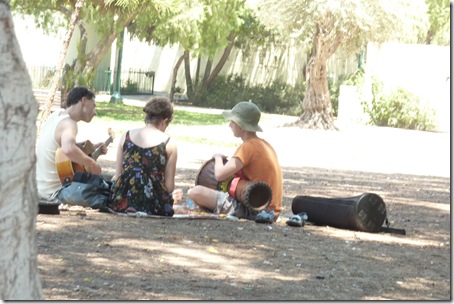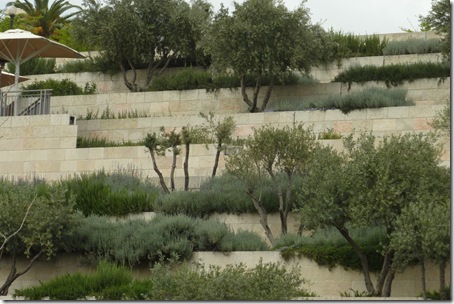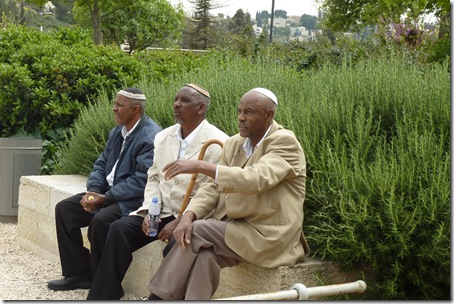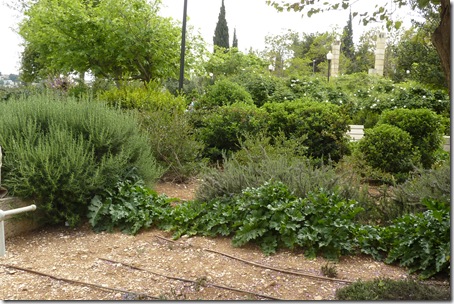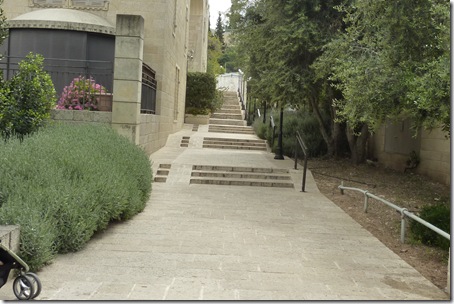The city of Tel Aviv is 102 years old. It gave birth when immigrants from Europe came pouring into Israel. Due to the overcrowded conditions in the ancient Mediterranean city of Jaffa, in April 1909, a few dozen families decided to build a suburb. At the time, there were only a couple of streets in Tel Aviv, along with piles of deep sand and some citrus groves. The Tel Aviv population grew quickly; Meir Dizengoff, the head of the local council, realized that he needed to design a well thought out plan for the expansion of Tel Aviv.
He hired Sir Patrick Geddes, a Scottish urban planner, biologist, and philosopher, along with a plethora of other talents.
“This is a green world, with animals comparatively few and small, and all dependent on the leaves. By leaves we live. Some people have strange ideas that they live by money. They think energy is generated by the circulation of coins. Whereas the world is mainly a vast leaf colony, growing on and forming a leafy soil, not a mere mineral mass: and we live not by the jingling of our coins, but by the fullness of our harvests.”
– Patrick Geddes
Gedde’s plan was to make Tel Aviv a garden city with tree lined pedestrian boulevards and a separation between main and residential streets. His design included shared public spaces; squares and parks on major boulevards and in residential areas.
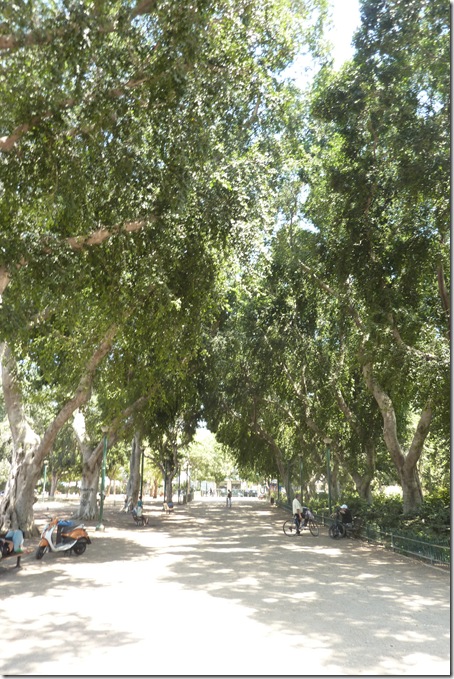 |
| A shaded, eucalyptus allee that leads from one end of Gan Meir Park to the other |
Today Tel Aviv is a thriving, international, fast paced city. The major boulevards consist of long and wide allees, with playgrounds and sitting areas on either side of the pedestrian and bike walkways. The ancient ficus trees that thrive there surrounded by cement are a testament to their hardiness under such stressful conditions. Over the past several years, the public park/boulevards have gone through major renovations; these areas have become informal hangouts for children, older adults, dog walkers, bike riders, and folks just hanging out.
The oldest planned garden (from what residents have told me) in the city is Gan Meir. It is a large public park surrounded on each side by quiet residential streets right off of the main commercial areas. It would be easy to pass by without even knowing it was a park unless your were on the look out. The bones of the park are shady allees of eucalyptus trees with a square in the middle and a smattering of older deciduous and evergreen trees on the perimeter. When I visited, a group of young adults were sitting on the ground strumming on their guitars. At one end of the park is a large pergola which I’ve been told is part of the original plan with a lily pond next to it. Behind the pond is a playground. The rest of the park, on either sides of the allees, are separate garden areas, bisected with walkways and sitting areas.
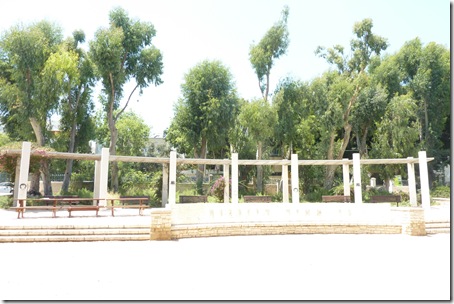 |
| A bare pergola close to an entryway surrounded by concrete. |
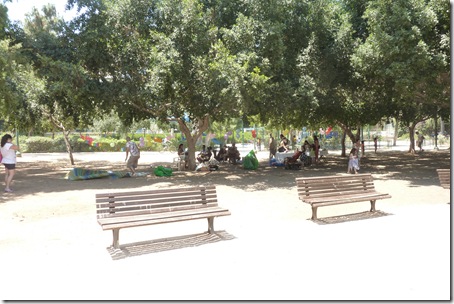 |
| Benches abutting playground |
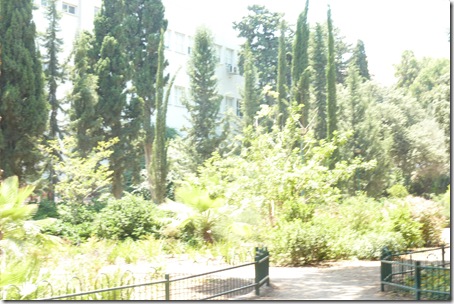 |
| Side garden area with a backdrop of lush cypresses |
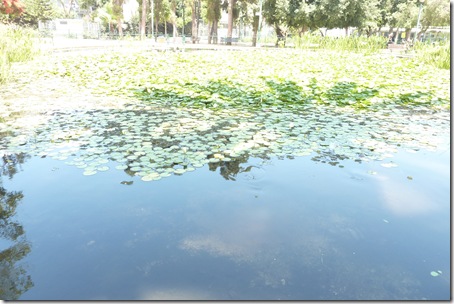 |
| Lily filled man made pond…any water element in Tel Aviv is a luxury |
I would guess that when the park was originally built that there was some type of planting design; if so, it’s no longer apparent. There are a smattering of older trees and bushes, some palm trees in sunnier areas, plenty of bare soil, with other bedraggled plants. It is a park whose heyday is long gone. The center square is no longer grass (or groundcover); just dirt.
I’ve been told that the municipality of Tel Aviv has the resources to transform this city into a true sustainable ‘garden city’ (which is their 10 year plan). The transformation of the major allees into well executed public spaces should set precedent for the rest of the city. Rather than wasting money on filling public areas with a smattering of annuals that need to be replanted each season, they should be filled with ornamental grasses and drought resistant perennials that can offer texture and color throughout the year. Plant material shouldn’t be thrown together and planted in mid-strips on large streets or on the banks of the Mediterranean boardwalk with no sense of design; rather a well respected garden designer and urban planner should be hired to create a master plan for the city’s public areas.
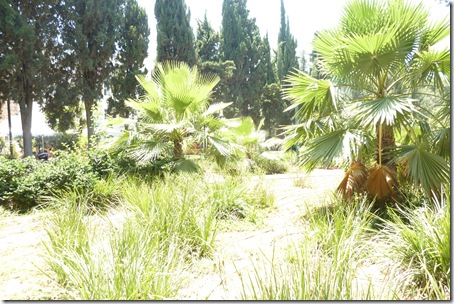 |
| A garden area with little emphasis placed on vegetation |
The decision makers of Tel Aviv only have to look at Jerusalem to be inspired. Its plant material, design, and layout of green areas is a model that Tel Aviv would be smart to follow. Alot of the credit goes to Naomi Tsur, The Deputy Mayor for Planning and Environment, whose vision, persistence and knowledge is transforming Jerusalem into a more sustainable and magnificent, green urban environment.
Photos below are of Jerusalem
If New York was able to transform Bryant Park, a run down, crime ridden, hangout for drug dealers, into one of the crown jewels of mid-town NYC, where folks throng to throughout the day (have you been there during lunch hours?), there is absolutely no reason why Tel Aviv can’t do the same. If you want to be a first class international, green city, then you’ve got to make it happen. It’s up to the mayor to shake things up in his government and get some visionaries into power who will help transform Tel Aviv’s green spaces into models for 21st century sustainable urban living,
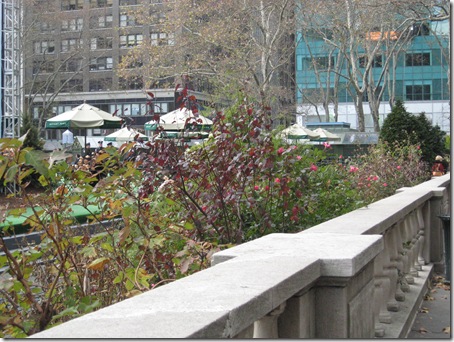 |
| Bryant Park in November…beautifully designed deciduous gardens |

